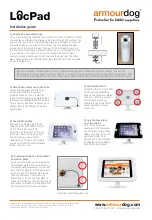
ETAS
Hardware Description
CBS10x.1-2 - User’s Guide
14
Diagnostic circuit
A diagnostic circuit of the CBS10x.1-2 Smart Lambda Sensor Cable continu
-
ously checks the stability of the internal control circuits, the correct function of
the connected sensor and the cable connections to the sensor. An error case is
signaled at the "ERROR" connection.
Electrical isolation
The analog output (AOUT, AOUT_GND) is electrically isolated from the supply
voltage (AC1, AC2) for all cable variants.
The connections "CONFIG" (configuration input) and "ERROR" (error output) of
the Smart Lambda Sensor Cables are electrically isolated from the "AOUT" con
-
nection (analog output): the configuration input and error output are not on the
potential of the output signal, but on the potential of the supply voltage.
2.2.3
Inputs and Outputs (Open Cable End)
The signal, diagnostic and configuration lines at the open end of the CBS10x.1-
2 Smart Lambda Sensor Cable (part 3 in Fig. 2
2 on page 13) are connected to
the power supply and the inputs and outputs of the application circuit. Depend
-
ing on the cable type, the following signals are available at the lines fitted with
ferrules:
The mapping of the signals to the connections is located in chapter 4.2.4
on page 27.
2.2.4
Connections "AOUT" and "AOUT_GND"
CBS100.1-2 and CBS104.1-2
The "AOUT" connection of the Smart Lambda Sensor Cables CBS100.1-2 and
CBS104.1-2 is a voltage output.
CBS105.1-2
The "AOUT" connection of the CBS105.1-2 Smart Lambda Sensor Cable is a
passive current output (4 to 20 mA).
For the function of the CBS105.1-2 Smart Lambda Sensor Cable, it is absolutely
necessary to connect the "AOUT" connection to an active input of an analysis
circuit so that the current interface is supplied with voltage.
Connection
CBS100.1-2
CBS104.1-2
CBS105.1-2
Analog output
X
X
X
Configuration input
X
-
X
Error output
X
-
X















































